
table of contents
- Grows slowly and stays small
- 20 trees that remain small
- Slow growing trees: 8 suitable species
- Bonsai: 7 recommended species
- Column trees: 5 taxa for the garden
When looking for suitable trees for your own garden, the available space must be kept in mind. Many trees play a dominant role on the property due to their size and width. If you have little space available, you can rely on a dwarf tree, because it stays small or grows slowly. Certain species can also be brought up to be smaller, which expands the range of available plants.
Grows slowly and stays small
A dwarf tree is ideal for various garden projects and is often the only option for people with small plots, terraces or balconies. Some of the trees can be kept in pots without any problems. In order for a tree to be called small, certain requirements must be met. Mainly this relates to the final height. On average, these trees reach heights of two to ten meters, which even makes it possible to plant them in the front yard. Alternatively, there are cut-resistant types that have no problem with being trimmed to the desired size. In the following sections, 40 suitable tree species will be presented to you that take up little space.
20 trees that remain small
If a tree remains small, it does not exceed a certain size, which you can make use of. Mainly certain cultivated forms or naturally smaller species are suitable for this purpose. Some trees, on the other hand, can be raised as a high trunk, which modifies the natural shrub shape in favor of a dwarf tree.
Hanging kitten willow (bot. Salix caprea)
- Height: 200 to 1,500 cm
- Flowering period: March to April
- hardy: yes

Laurel (bot. Laurel)
- Height: 200 to 500 cm
- Flowering period: March to May
- hardy: limited
- Upbringing to become a standard tree is necessary

Mountain pine (bot. Pinus mugo subsp. mugo)
- Height: 200 to 300 cm
- hardy: yes
- Upbringing to become a standard tree is necessary
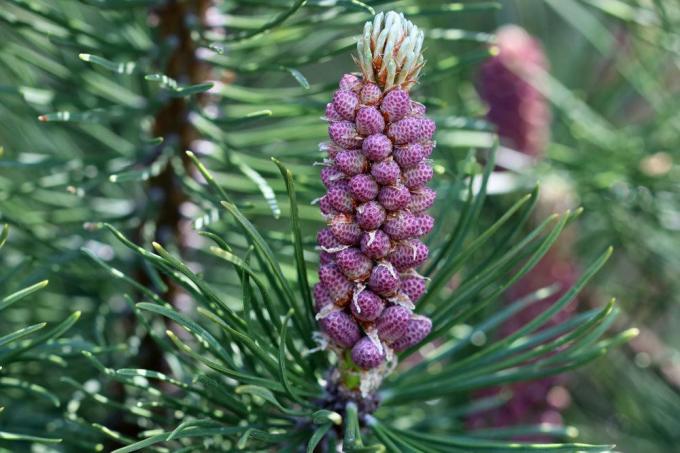
Boxwood (bot. Buxus sempervirens)
- Height: 200 to 500 cm
- Flowering period: March to May
- hardy: yes
- Upbringing to become a standard tree is necessary

Lilac (bot. Syringa)
- Height: 200 to 600 cm
- Flowering period: mid-April to mid-July
- hardy: yes
- Upbringing to become a standard tree is necessary
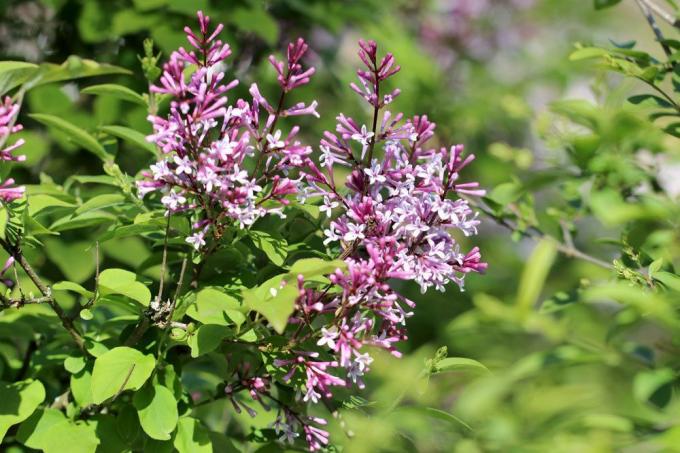
Red beech 'Purple Fountain' (bot. Fagus sylvatica 'Purple Fountain')
- Height: 200 to 800 cm
- Flowering period: May
- hardy: yes
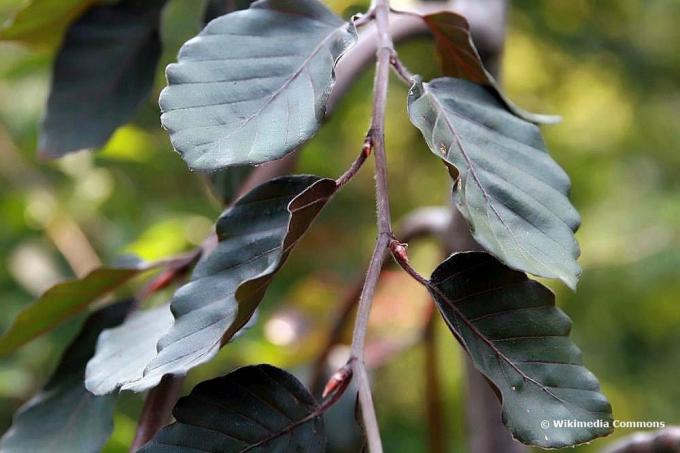
Japanese jewelry willow (bot. Salix hakuro 'Nishiki')
- Height: 200 to 350 cm
- Flowering period: March to mid-April
- hardy: yes
- Upbringing to become a standard tree is necessary

Currant (bot. Ribes)
- Growth height: maximum 200 cm
- Flowering period: mid-April to late May
- hardy: yes
- Upbringing to become a standard tree is necessary
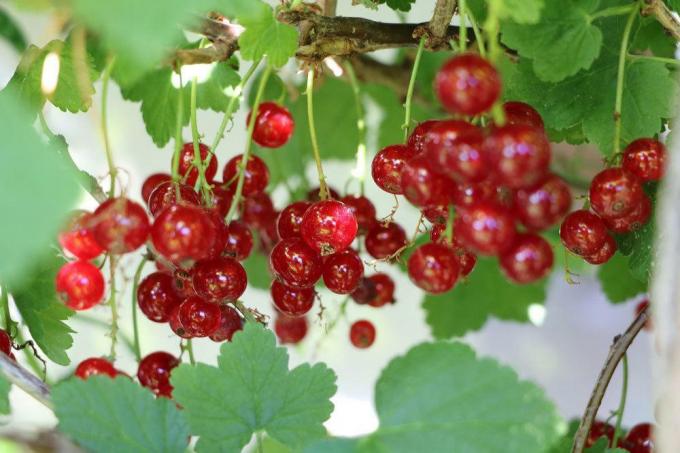
Gooseberry (bot. Ribes uva-crispa)
- Growth height: maximum 150 cm
- Flowering period: April to the end of May
- hardy: yes
- Upbringing to become a standard tree is necessary

Ornamental apple 'Tina' (bot. Malus 'Tina')
- Growth height: maximum 150 cm
- Flowering period: May
- hardy: yes
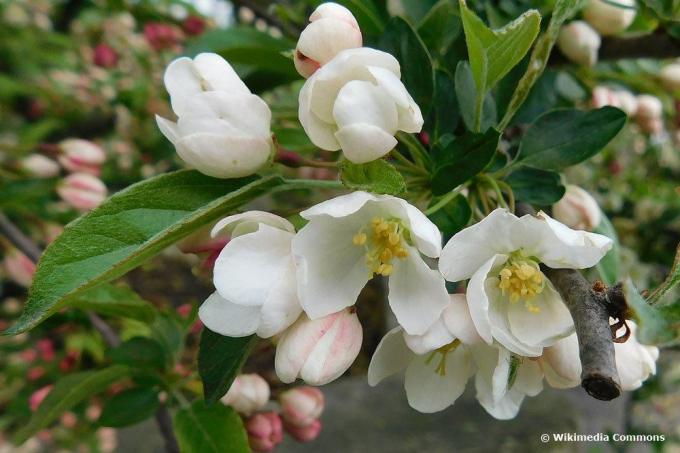
Willow-leaved pear (bot. Pyrus salicifolia)
- Growth height: 400 to 700 cm
- Flowering period: late April to late May
- hardy: yes
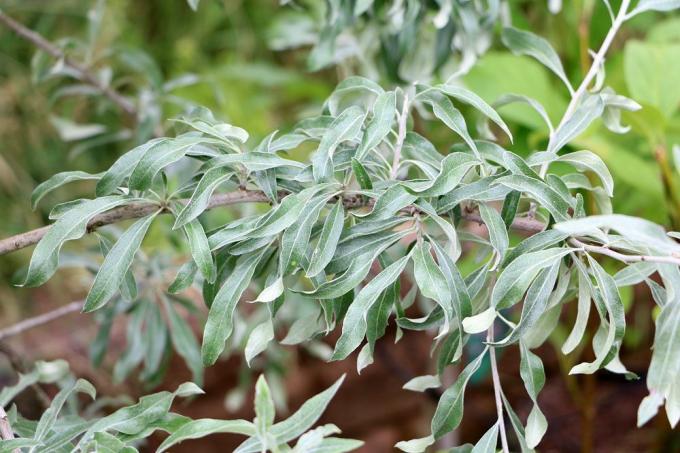
False cypress (bot. Chamaecyparis)
- Height: 200 to 1,500 cm
- hardy: yes
- Upbringing to become a standard tree is necessary

Cypresses (bot. Cupressaceae)
- Height: 400 to 1,500 cm
- hardy: yes (depending on location)
- Upbringing to become a standard tree is necessary
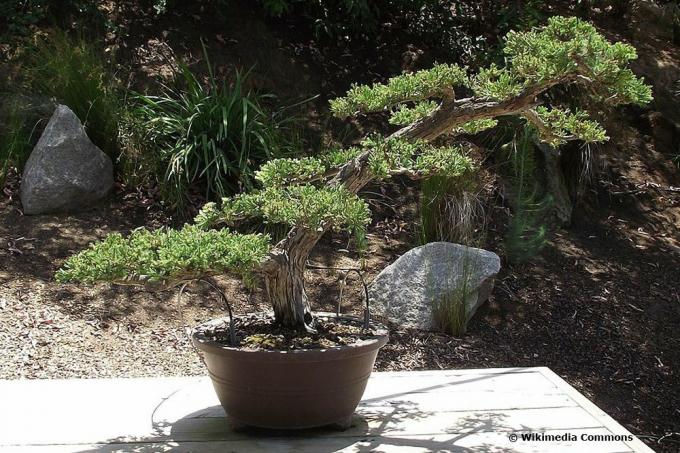
Olive tree (bot. Olea europaea)
- Growth height: up to 1,000 cm
- Flowering period: May to June
- hardy: no
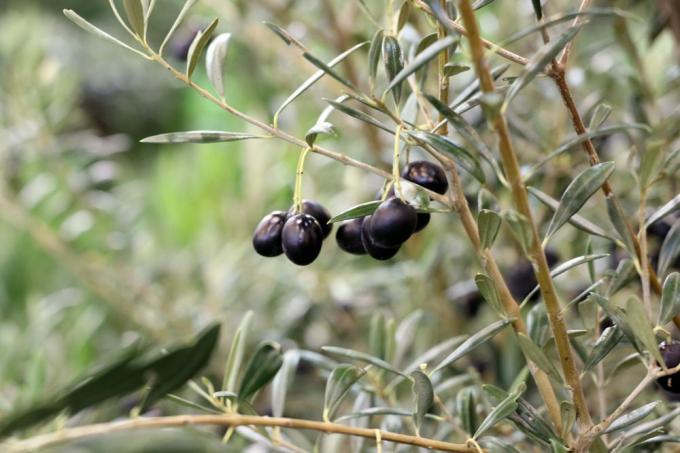
Real wine (bot. Vitis vinifera subsp. vinifera)
- Growth height: up to 120 cm
- Flowering period: mid-May to early July
- hardy: yes
- Upbringing to become a standard tree is necessary
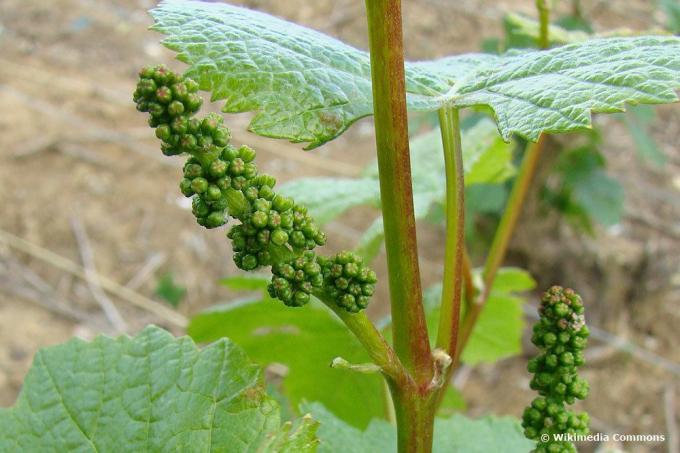
Tulip magnolia (bot. Magnolia soulangeana)
- Height: 400 to 800 cm
- Flowering period: April to mid-May
- hardy: yes
- Upbringing to become a standard tree is necessary
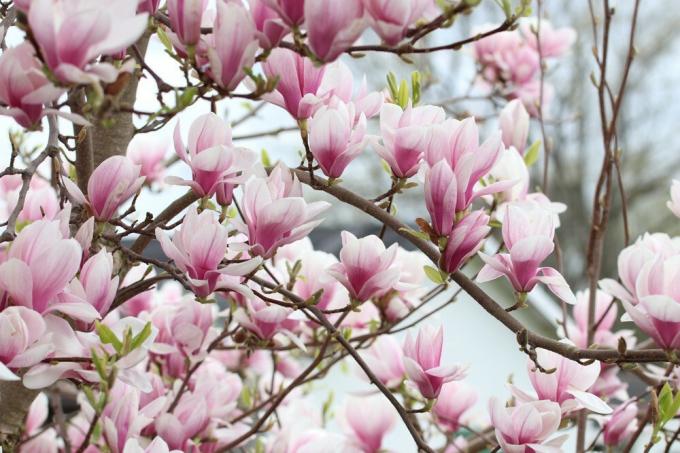
Japanese clove cherry 'Kanzan' (bot. Prunus serrulata 'Kanzan')
- Growth height: 350 to 800 cm
- Flowering period: beginning of May until after the ice saints
- hardy: yes
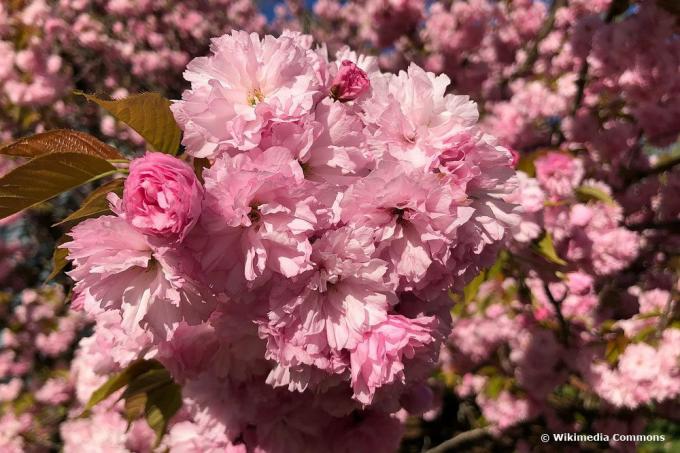
18. Tree of life (bot. Thuja)
- Growth height: 500 to 700 cm
- hardy: yes
- Upbringing to become a standard tree is necessary

19. Leather-leaved hawthorn 'Carrierei' (bot. Crataegus lavallei 'Carrierei')
- Height: 300 to 500 cm
- Flowering period: May
- hardy: yes

20. Weeping birch 'Youngii' (bot. Betula pendula 'Youngii')
- Height: 200 to 450 cm
- Flowering period: mid-March to mid-April
- hardy: yes

Make sure that some species are no longer winter hardiness in the bucket. To get this you need to wrap the pot or provide some other winter protection.
Note: A great advantage of the species mentioned is the possibility of bringing them up small and thus reducing their size. Some taxa such as the weeping birch or the kitten willow can reach heights of up to 15 meters with good care, which can be a little tight, especially in front gardens.
Slow growing trees: 8 suitable species
Not every dwarf tree reaches full size within a few years. Such a tree grows slowly, which makes it easy to raise and cultivate. Typical characteristics of such trees are:
- Final amount after 20 to 30 years (at the earliest)
- cut resistant
- usually form spherical crowns
- robust
If you choose a tree from the following species and varieties, you can lean back and relax because it grows slowly and stays small. These are investments that will stay in the family for a long time, which is what makes them so attractive. Families with a small garden in particular benefit from these 8 varieties:
Blood plum 'Nigra' (bot. Prunus cerasifera 'Nigra')
- Height: 200 to 450 cm
- Flowering time: April
- hardy: yes
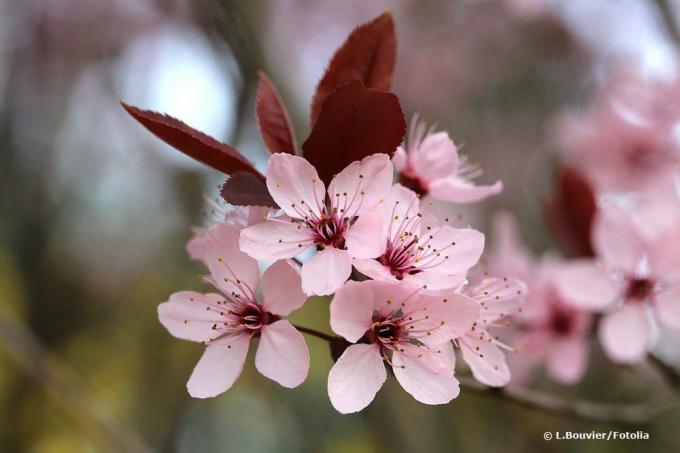
Tree rock pear 'Robin Hill' (bot. Amelanchier arborea 'Robin')
- Height: 250 to 550 cm
- Flowering period: April to mid-May
- hardy: yes
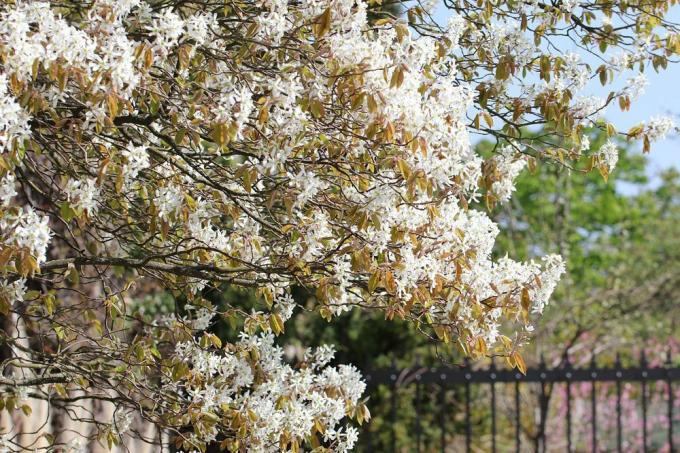
Kugelbaum 'Globosum' (bot. Acer platanoides 'Globosum')
- Height: 500 to 550 cm
- Flowering time: April
- hardy: yes

Real hawthorn 'Paul's Scarlet' (bot. Crataegus laevigata 'Paul's Scarlet')
- Growth height: 400 to 700 cm
- Flowering period: May to early June
- hardy: yes
- well suited for urban climates
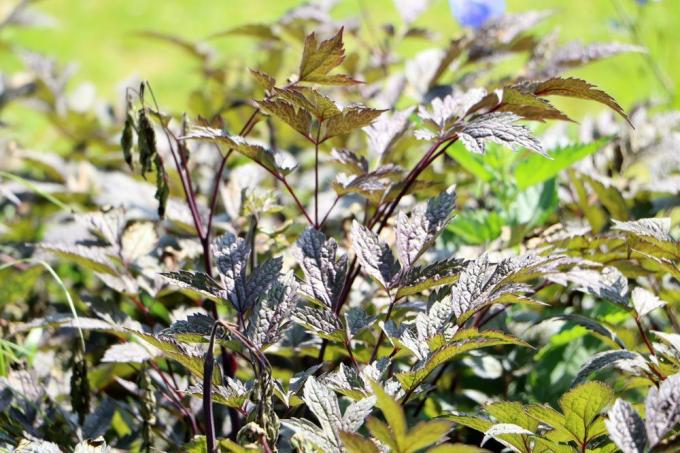
Ball trumpet tree 'Nana' (bot. Catalpa bignonioides 'Nana')
- Height: 200 to 350 cm
- hardy: no (requires winter protection)
- smells
- drives away mosquitoes
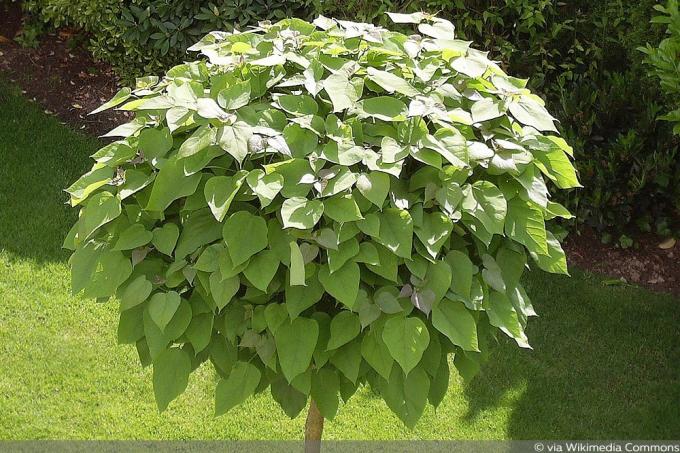
Marsh oak 'Green Dwarf' (bot. Quercus palustris 'Green Dwarf')
- Height: a maximum of 300 cm
- Flowering period: May
- hardy: hardy
- extremely undemanding

Ball cherry 'Globosa' (bot. Prunus fruticosa 'Globosa')
- Height: 200 to 300 cm
- Flowering period: April to mid-May
- hardy: yes
Ball acacia 'Umbraculifera' (bot. Robinia pseudoacacia 'Umbraculifera')
- Growth height: up to 500 cm
- hardy: limited (protection recommended)
- suitable for urban climate
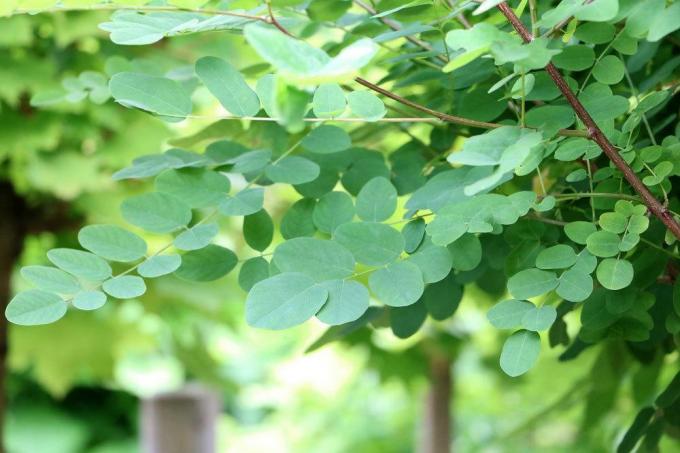
An important point in the selection mentioned is the final height. Many well-known trees with slow growth such as the classic oak or the popular yew become very tall and sometimes wide with age, which is not recommended when there is limited space. For this reason, do not use such specimens if it can be assumed that the space will not expand in the next few decades.
Tip: Look out for varieties with the suffix 'Nana' in tree nurseries or specialist dealers. In most cases, the name indicates varieties of a certain species that remain small or even a dwarf tree.
Bonsai: 7 recommended species
Have you thought about a bonsai as a possible dwarf tree? Bonsai exert their own charm as they are permanently small. This is caused by the extensive pruning measures and the small amount of substrate and space available to the trees. Bonsai can be established from a variety of different species that are extremely decorative and can withstand even intensive pruning. You can also keep bonsai outdoors during the warmer seasons. The following list gives you an overview of suitable types. The stature height is not specified for these, as it is determined by the cut:
Girl's pine (bot. Pinus parviflora)
- Flowering period: May to June
- hardy: yes
- very decorative

Tricorn maple (bot. Acer buergerianum)
- Flowering period: May
- hardy: yes
- Insect pasture

Japanese maple (bot. Acer palmatum)
- Flowering period: May to June
- hardy: down to -20 ° C
- forms a beautiful spherical crown
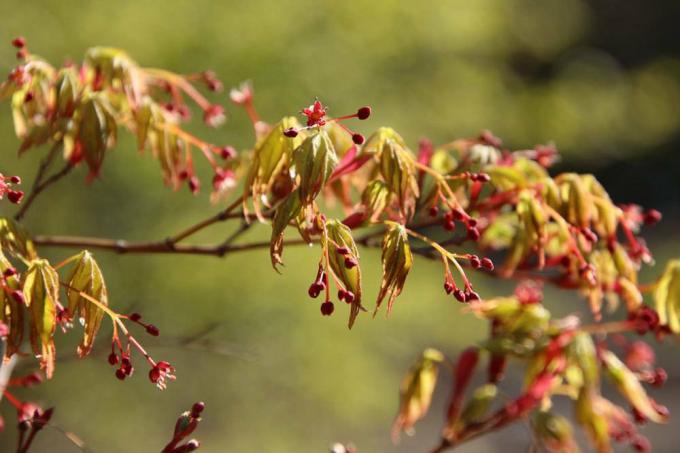
Juniper (bot. Juniperus)
- Flowering period: April to June
- hardy: yes
- can be fruit
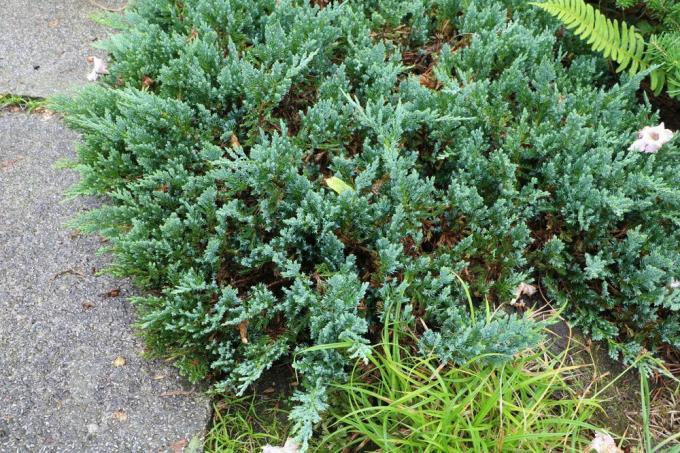
Chinese elm (bot. Ulmus parvifolia)
- Flowering period: August to October
- hardy: down to -20 ° C
- one of the most popular types of bonsai

Japanese apricot (bot. Prunus mume)
- Flowering period: March to April
- hardy: no (winter protection required)
- can be fruit
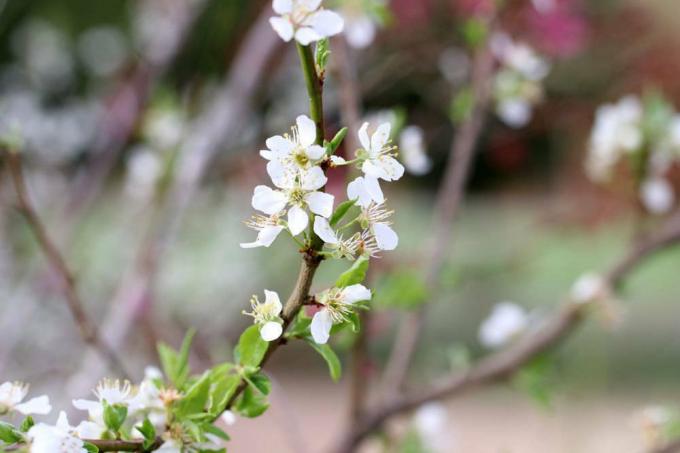
Toringo apple (bot. Malus toringo)
- Flowering period: April to mid-May
- hardy: down to -16 ° C
- can be fruit
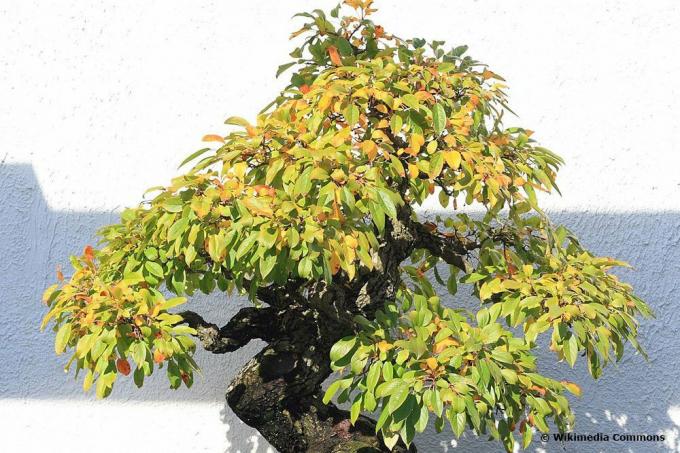
Another advantage: a bonsai grows slowly. If you like to let your trees grow over a longer period of time, you should go for these mini-trees.
Column trees: 5 taxa for the garden
Another variant of trees that remain small are those that are raised as pillars. Many species can be brought into this form, but only certain remain small in the long term. These are varieties that were specifically bred as a column and only follow dissolute growth when neglected. This means the following 5:
Column hornbeam 'Monumentalis' (bot. Carpinus betulus 'Monumentalis')
- Growth height: 400 to 600 cm
- Flowering period: April to the end of May
- hardy: yes
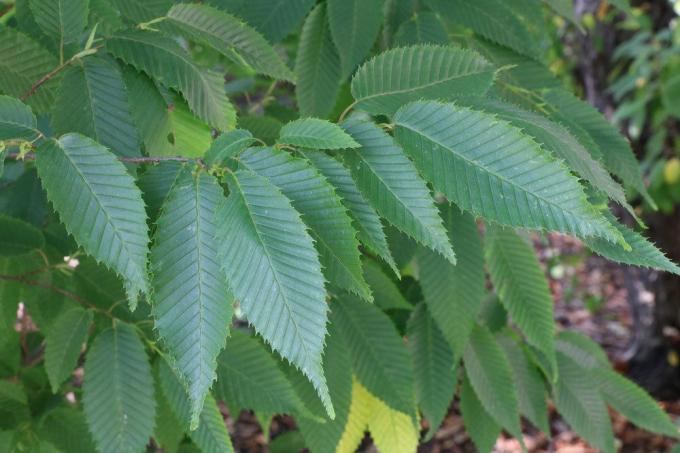
Mountain ash 'Fastigiata' (bot. Sorbus aucuparia ‚Fastigiata ')
- Growth height: 400 to 700 cm
- Flowering period: May to mid-June
- hardy: yes
Column cherry 'Amanogawa' (bot. Prunus serrulata 'Amanogawa')
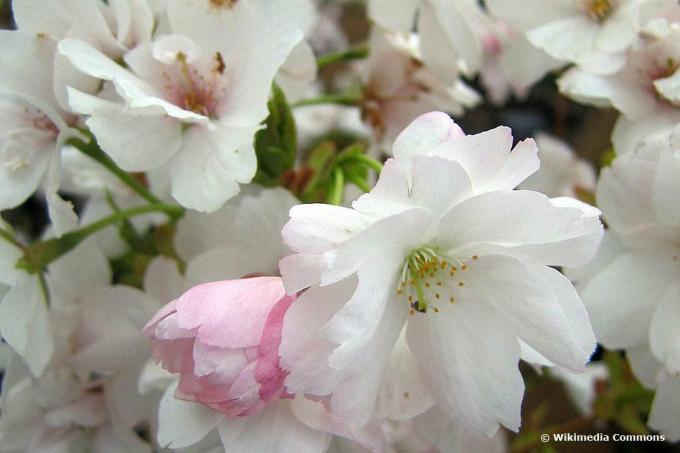
- Height: 300 to 500 cm
- Flowering period: April to mid-May
- hardy: yes
- pleasantly fragrant
Columnar hawthorn 'Stricta' (bot. Crataegus monogyna 'Stricta')
- Growth height: 500 to 700 cm
- Flowering period: May to the end of June
- hardy: yes
Pillar gold elm 'Wredei' (bot. Ulmus hollandica 'Wredei')

- Height: 500 to 1,100 cm
- hardy: yes
- decorative golden yellow foliage
Note: In general, columnar fruit can be cultivated for every balcony and even smaller terraces, as these were specially grown for these conditions. If you choose column fruit, you can also harvest the fruit at the end of the season and look forward to healthy fruit.


